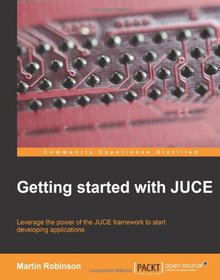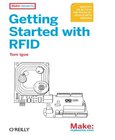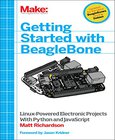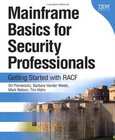Getting Started with JUCE

Book Details:
| Publisher: | Packt Publishing |
| Series: | Packt , Getting Started |
| Author: | Martin Robinson |
| Edition: | 1 |
| ISBN-10: | 1783283319 |
| ISBN-13: | 9781783283316 |
| Pages: | 158 |
| Published: | Oct 25 2013 |
| Posted: | Nov 19 2014 |
| Language: | English |
| Book format: | |
| Book size: | 1.94 MB |
Book Description:
Leverage the power of the JUCE framework to start developing applications Overview Begin developing user interfaces in code or with a graphical editor Build and run the Introjucer tool Create a JUCE project with the Introjucer tool In Detail There are a number of frameworks available for developing cross-platform applications. JUCE achieves this with a combination of consistency, ease-of-use, and breadth of functionality. JUCE is a C++ toolkit for building cross-platform applications on PC, Mac, Linux, iOS, and Android. It encourages you to write consistent code and is particularly good for complex, customized GUIs and audio/midi processing; it also includes a vast range of classes to help with all your day-to-day programming tasks Getting Started with JUCE is a practical, hands-on guide to developing applications using JUCE which will help you get started with many of the core aspects of the JUCE library. The book guides you through the installation of JUCE and covers the structure of the source code tree including some of the useful tools available for creating JUCE projects. Getting Started with JUCE will guide you through how to use the JUCE library, from the installation of basic tools to developing examples using many of its classes. It will take you through a series of practical examples that show you how to create user interfaces, illustrating the key features. You will also learn how to deal with files, text strings, and other fundamental data using the JUCE library. In particular, you will learn how to create user interfaces both using code and using the Introjucer tool to layout and configure user interface functionality. You will also manipulate image and audio data and learn how to read and write common media file formats. With this book, you will learn everything you need to know to understand some of the additional helpful utilities offered by JUCE and how to use the JUCE documentation to get started with such classes. What you will learn from this book Create projects using the Introjucer tool Build user interfaces using code and the graphical editor in the Introjucer Respond to user interaction form sliders, buttons, and text entry Perform fundamental drawing commands Store and manipulate data in dynamic arrays Convert binary files to source code for cross-platform compatibility Store and manipulate application data and settings Read, write, and display image files Approach This book is a fast-paced, practical guide full of step-by-step examples which are easy to follow and implement. Who this book is written for This book is for programmers with a basic grasp of C++. The examples start at a basic level, making few assumptions beyond fundamental C++ concepts. Those without any experience with C++ should be able to follow and construct the examples, although you may need further support to understand the fundamental concepts.
Download Link:
Related Books:
Getting Started with RFID
Identify Objects in the Physical World with Arduino
If you want to experiment with radio frequency identification (RFID), this book is the perfect place to start. All you need is some experience with Arduino and Processing, the ability to connect basic circuits on a breadboard with jumper wire-and you're good to go. You'll be guided through three hands-on projects that let you experience RFID in action. RFID is used in various applications, such as identifying store items or accessing a toll road with an EZPass system. After you build each of the book's projects in succession, you'll have the knowledge to pursue RFID applications of your own. Use Processing to get a sense of how RFID readers behave Connect Arduino to an RFID reader and discover how to use RFID tags as keys Automate your office or home...
Getting Started with BeagleBone
Linux-Powered Electronic Projects With Python and JavaScript
Many people think of Linux as a computer operating system, running on users' desktops and powering servers. But Linux can also be found inside many consumer electronics devices. Whether they're the brains of a cell phone, cable box, or exercise bike, embedded Linux systems blur the distinction between computer and device. Many makers love microcontroller platforms such as Arduino, but as the complexity increases in their projects, they need more power for applications, such as computer vision. The BeagleBone is an embedded Linux board for makers. It's got built-in networking, many inputs and outputs, and a fast processor to handle demanding tasks. This book introduces you to both the original BeagleBone and the new BeagleBone Black and gets you start...
Mainframe Basics for Security Professionals
Getting Started with RACF
Leverage Your Security Expertise in IBM System z Mainframe Environments For over 40 years, the IBM mainframe has been the backbone of the world's largest enterprises. If you're coming to the IBM System z mainframe platform from UNIX , Linux , or Windows , you need practical guidance on leveraging its unique security capabilities. Now, IBM experts have written the first authoritative book on mainframe security specifically designed to build on your experience in other environments. Even if you've never logged onto a mainframe before, this book will teach you how to run today's z/OS operating system command line and ISPF toolset and use them to efficiently perform every significant security administration task. Don't have a mainframe availabl...
2007 - 2021 © eBooks-IT.org



